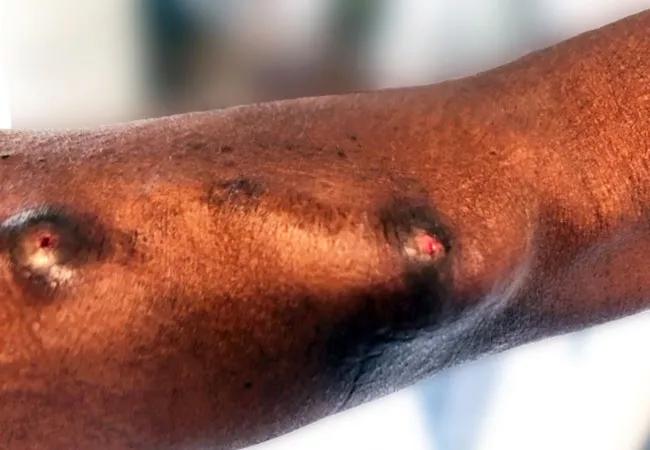An expert weighs in

Mention buttonhole cannulation of arteriovenous fistula, and you get opinions. The technique remains controversial and highly polarizing. Some nephrologists would like to see the technique banned due to the high incidence of local and systemic infections attributed to the buttonhole technique. Other nephrologists feel these risks can be managed with proper patient selection and attention to detail. Patients favor the technique over the rope ladder because it causes less pain than sharp needle sticks and is more cosmetically acceptable.
Advertisement
Cleveland Clinic is a non-profit academic medical center. Advertising on our site helps support our mission. We do not endorse non-Cleveland Clinic products or services. Policy
The fact is that limited, inconclusive clinical evidence from large, well-designed studies conducted in U.S. hemodialysis centers makes it difficult to draw conclusions about the risks of buttonhole access as compared with the rope ladder technique. Nevertheless, the buttonhole technique should not be written off, says Tushar Vachharajani, MD, Director of Interventional Nephrology and Global Nephrology at Cleveland Clinic.
“Higher infection rates do not mean you can’t use the approach in the right patient. You simply have to follow the protocol for creation and maintenance of the access down to the last detail,” he says.
Dr. Vachharajani recently elucidated this process in an article published in Kidney360.
Q. According to the Kidney Disease Outcomes Quality Initiative Clinical Practice Guideline for Vascular Access: 2019 Update, it is reasonable to limit buttonhole access to special circumstances, given the associated risks of infection and related adverse consequences. You served on this writing committee. Can you please discuss what led to this recommendation?
T.V.: It’s primarily an issue with the way dialysis centers in the U.S. operate. They are simply not set up to manage these patients.
The goal of the buttonhole technique is to develop two fibrous tracts from the skin surface to the arteriovenous fistula that can be repeatedly cannulated with blunt needles. It takes six to 10 cannulations with a sharp needle to create this fibrous tract. The angle of insertion must be the same every day. Therefore, the person performing the cannulation should be the same. Unfortunately, staff turnover in dialysis centers is high, and the large number of patients seen on a daily basis cannot guarantee that a patient will be assigned the same dialysis nurse or patient care technician every time.
Advertisement
As a result, educating staff to implement the right technique is not a priority of most dialysis centers. Additionally, many do not carry the blunt needles needed for the buttonhole procedure.
Q. What is the primary cause of infections?
T.V.: The skin and buttonhole site must be carefully disinfected, and the scab properly removed, to prevent infection. This is a big barrier since the process takes five to seven minutes. Scabs must be removed and not be allowed to enter the fibrous tract. After removal, the site must be disinfected again and allowed to dry before placing the blunt needle. The low staff-to-patient ratio in dialysis centers does not allow for this attention to detail with a single patient and increase the probability of shortcuts leading to infection.
Q. What are the special circumstances mentioned in the KDOQI guideline that suggest who may be appropriate for the buttonhole access?
T.V. For patients doing home dialysis, especially with self-cannulation, the buttonhole makes sense. Strict adherence to the steps outlined in our procedure has proven to be effective in preventing the occurrence of access-related infections.
The greater comfort level reported by patients with the buttonhole, and ease of use, enables many to overcome their fear of pain and needle-phobia so they can self-cannulate at home. Although currently available evidence supports an increased risk of infectious complications, it’s unclear whether this evidence is strong enough to supersede patient desire for a more acceptable option. That’s why I say that buttonhole is the right access in the right patient. The provider simply must emphasize that technique and infection control must be followed consistently, or it’s a disaster waiting to happen.
Advertisement
Advertisement

Pediatric urologists lead quality improvement initiative, author systemwide guideline

Fixed-dose single-pill combinations and future therapies

Reproductive urologists publish a contemporary review to guide practice

Two recent cases show favorable pain and cosmesis outcomes

Meta-analysis assesses outcomes in adolescent age vs. mid-adulthood

Proteinuria reduction remains the most important treatment target.

IgA nephropathy is a relatively common autoimmune glomerular disease that can be diagnosed only by biopsy

Oncologic and functional outcomes are promising, but selection is key